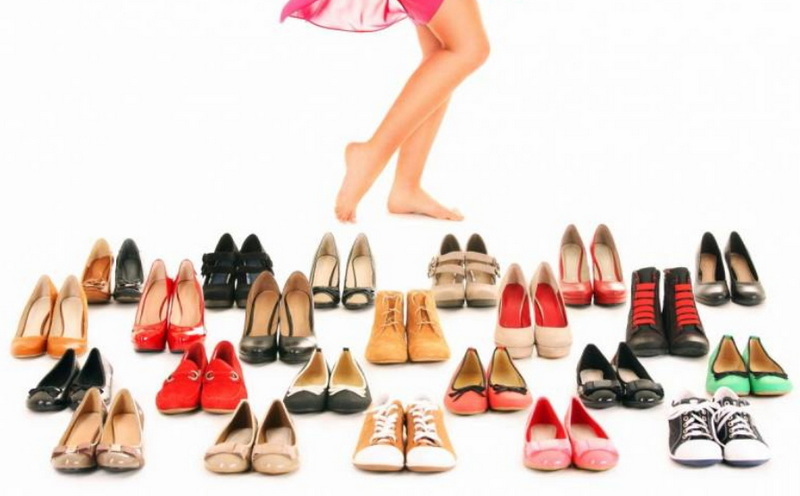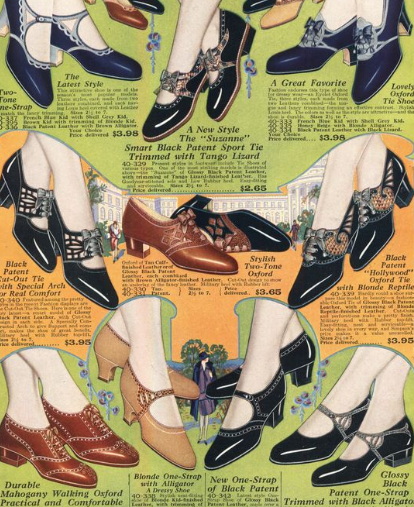Content Menu
● The Basics of Pioneer Women's Footwear
>> Everyday Shoes
>> Special Occasion Footwear
● Materials and Construction
● Seasonal Variations
>> Summer Footwear
>> Winter Footwear
● Regional Differences
>> Eastern Settlements
>> Western Frontier
● The Cultural Significance of Pioneer Women's Shoes
>> Social Status
>> Fashion and Propriety
>> Practicality vs. Fashion
● The Evolution of Pioneer Women's Footwear
>> Mid-Century Changes
>> Late Century Developments
● The Legacy of Pioneer Women's Shoes
● Conclusion
● FAQ
>> 1. What was the most common type of everyday shoe for pioneer women?
>> 2. Did pioneer women wear high heels?
>> 3. How did pioneer women's shoes change with the seasons?
>> 4. Were pioneer women's shoes handmade or store-bought?
>> 5. How did pioneer women's shoes reflect their social status?
● Citations:
Pioneer women's footwear was a crucial aspect of their daily lives, reflecting both practicality and the fashion trends of their time. From the rugged terrain of the Western frontier to the more settled areas of the East, the shoes worn by these resilient women were as diverse as their experiences. Let's explore the fascinating world of pioneer women's footwear, examining the styles, materials, and cultural significance of their shoes.

The Basics of Pioneer Women's Footwear
Pioneer women's shoes were primarily designed for functionality, durability, and comfort. However, they also reflected the fashion trends of the era, particularly for special occasions and Sunday best attire.
Everyday Shoes
For daily wear, pioneer women typically opted for sturdy, practical footwear that could withstand the rigors of frontier life. These shoes were often:
- Made of leather
- Ankle-length or slightly higher
- Black or dark brown in color
- Low-heeled for stability
The most common everyday shoes for pioneer women were:
1. Brogans: These were sturdy, ankle-high shoes with a square toe. Interestingly, brogans were often made with a straight last, meaning there was no distinction between the left and right shoe[1].
2. Bootees: Similar to brogans but slightly lower in height, bootees were popular for their versatility and ease of wear.
3. Button-up boots: These boots featured buttons along the side for closure, providing a snug fit and protection against the elements.
4. Elastic-sided boots: As technology advanced, some women wore boots with elastic sides, which made them easier to put on and take off.
Special Occasion Footwear
For Sundays, social gatherings, and other special events, pioneer women would wear more refined shoes that reflected the fashions of the time. These shoes were often:
- Made of finer materials like silk or high-quality leather
- More intricately designed with decorative elements
- Featuring slightly higher heels (though still modest by today's standards)
Popular styles for special occasions included:
1. Slippers: Delicate shoes made of cloth or thin leather, often with minimal soles[7].
2. Gaiters: Ankle-high shoes that buttoned or laced up the side, sometimes featuring decorative patterns or embroidery.
3. Low-heeled pumps: Simple, elegant shoes with a slight heel for a more formal appearance.
Materials and Construction
The materials used in pioneer women's shoes were chosen for their durability and availability. Common materials included:
- Leather: The most prevalent material, used for both uppers and soles due to its strength and water-resistant properties.
- Wood: Sometimes used for soles and heels, particularly in areas where leather was scarce.
- Cloth: Used for uppers in some shoes, especially for indoor or special occasion wear.
- Cotton: Used for linings and sometimes for the uppers of more delicate shoes.
Construction methods were relatively simple but effective:
- Soles and heels were often secured to the upper part of the shoe using nails or wooden pegs rather than stitching[1].
- Many shoes were made using a straight last, which meant they could be worn on either foot, increasing their longevity.
Seasonal Variations
Pioneer women adapted their footwear to the changing seasons:
Summer Footwear
In warmer months, women might opt for:
- Lighter-weight leather shoes
- Cloth gaiters for breathability
- Open-sided shoes for better ventilation
Winter Footwear
During colder seasons, women would wear:
- Higher boots for protection against snow and cold
- Thicker, more insulated shoes
- Overshoes or galoshes to protect their regular shoes from wet conditions

Regional Differences
The type of shoes worn by pioneer women often varied depending on their location:
Eastern Settlements
Women in more established Eastern areas had greater access to fashionable footwear and might wear:
- More delicate shoes for everyday use
- A wider variety of styles influenced by urban fashion trends
Western Frontier
Women on the Western frontier typically wore:
- Sturdier, more practical boots and shoes
- Footwear that could withstand rough terrain and harsh conditions
The Cultural Significance of Pioneer Women's Shoes
Shoes played an important role in pioneer women's lives beyond mere functionality:
Social Status
The quality and style of a woman's shoes often reflected her social status and economic situation. Wealthier women might have multiple pairs of shoes for different occasions, while those with fewer resources might have only one pair for all purposes[3].
Fashion and Propriety
Despite the challenges of frontier life, many pioneer women remained conscious of fashion trends. Proper footwear was considered essential for maintaining a respectable appearance, especially when attending church or social gatherings[6].
Practicality vs. Fashion
There was often a tension between the practical needs of frontier life and the desire to adhere to fashion norms. Some women, like those described by Frances Trollope, would wear impractical thin slippers even in harsh winter conditions to maintain a fashionable appearance[7].
Pioneer Women's Fashion vs. Practicality
The Evolution of Pioneer Women's Footwear
As the 19th century progressed, women's shoes evolved to better suit their changing roles and activities:
Mid-Century Changes
By the 1840s and 1850s, more women were becoming involved in public life, participating in social movements and outdoor activities. This led to changes in footwear design:
- Thicker soles became more common for better durability and comfort when walking outdoors.
- Boots gained popularity for their practicality and protection.
Late Century Developments
By the 1860s, there was a notable shift towards more practical footwear:
- Thick walking boots became universally accepted for women, even in fashionable circles[7].
- The variety of available shoe styles increased, catering to different activities and preferences.
The Legacy of Pioneer Women's Shoes
The footwear of pioneer women has left a lasting impact on American fashion and culture:
- Many modern boot styles can trace their origins to the practical designs of pioneer footwear.
- The balance between fashion and functionality in women's shoes continues to be an important consideration in footwear design.
- The resilience and adaptability of pioneer women, as reflected in their choice of footwear, remains an inspiring aspect of American history.
Conclusion
The shoes worn by pioneer women were a reflection of their lives – practical, resilient, and adaptable. From the sturdy brogans of everyday wear to the delicate slippers reserved for special occasions, these shoes tell a story of women who balanced the harsh realities of frontier life with the desire to maintain a sense of fashion and propriety.
As we've seen, pioneer women's footwear was influenced by a complex interplay of factors including geography, social status, and changing societal roles. The evolution of their shoes from delicate, impractical slippers to sturdy walking boots mirrors the broader changes in women's lives during the 19th century.
Understanding the shoes of pioneer women provides us with valuable insights into their daily lives, the challenges they faced, and the ingenuity they displayed in adapting to their environment. It's a testament to the enduring spirit of these women that their footwear choices continue to influence and inspire us today.

FAQ
1. What was the most common type of everyday shoe for pioneer women?
The most common everyday shoes for pioneer women were sturdy, ankle-length leather boots or shoes called brogans. These were typically made with a square toe and had a straight last, meaning they could be worn on either foot[1].
2. Did pioneer women wear high heels?
Pioneer women generally did not wear high heels for everyday use. Their shoes typically had low heels or no heels at all for stability and comfort. Even for special occasions, heels were usually modest by today's standards[1][3].
3. How did pioneer women's shoes change with the seasons?
Pioneer women adapted their footwear to the seasons. In summer, they might wear lighter shoes or cloth gaiters. In winter, they would opt for higher boots, thicker shoes, or add overshoes for protection against cold and wet conditions.
4. Were pioneer women's shoes handmade or store-bought?
Both handmade and store-bought shoes were common for pioneer women. In more remote areas, shoes were often handmade by local cobblers or family members. As settlements grew and general stores became more common, store-bought shoes became increasingly available[3].
5. How did pioneer women's shoes reflect their social status?
The quality, style, and number of shoes a pioneer woman owned often reflected her social status and economic situation. Wealthier women might have multiple pairs of finer shoes for different occasions, while those with fewer resources might have only one sturdy pair for all purposes[3][6].
Citations:
[1] https://californiapioneer.com/mormon-battalion/period-clothing/
[2] https://silhouettescostumes.com/customer-projects/projects/fiona-buker-1866-pioneer-girl/fiona-buker-1866-pioneer-girl-fashion-history/
[3] https://recollections.biz/blog/pioneer-clothing-what-women-wore-in-the-western-frontier/
[4] https://www.walmart.com/browse/clothing/the-pioneer-woman-shoes/5438_3317124_6674614_2443970
[5] https://www.walmart.com/ip/The-Pioneer-Woman-Embroidered-Mid-Calf-Heeled-Cowboy-Boot-Women-s/3876810693
[6] https://recollections.biz/blog/pioneer-clothing-accessories-women-wore-on-the-frontier/
[7] https://www.neh.gov/humanities/2008/marchapril/feature/teensy-weensy-itty-bitty-shoes
[8] https://www.etsy.com/market/pioneer_boots
[9] https://www.instagram.com/pioneershoes/

















